AI programs are becoming an efficient assistant for human stylists. These can handle more attributes, process large amounts of data faster and learn users’ styles more accurately
Among all the domains of human creativity, human fashion behaviour modelling is one of the biggest challenges given its random nature due to erratic irrationality, individual uniqueness, craziness in selection and adoption, cultural dependence, and individual and cultural distinctiveness. According to a survey, 93 per cent senior business executives feel that selection and promotions of employees are affected by their fashion and clothing choices. To monitor and track the fashion sense, significant time and effort is required. Moreover, employing fashion experts and stylists is cost-intensive, and competent experts and professionals are difficult to get.
Artificial intelligence (AI) artist program AARON, created in 1937 by artist Harold Cohen, was the first profound connection between AI and the human creativity. There are many benefits of using AI programs for fashion designing. AI fashion program can process large amounts of data faster, learn users’ style more accurately, memorise and process users’ feedback, store descriptions of users’ items, and help users become more organised and efficient.
Evolution of AI
AI is the science and engineering of making intelligent machines, more so intelligent computer programs. In layman’s language, if a computer performs a function that is deemed to be intelligent for humans, we can say the computer has intelligence—an amalgamation of knowledge and reasoning power.
AI has come a long way from the demo of the first running AI program, the Logic Theorist (LT) in 1956, to creation of ELIZA (an interactive program capable of participating in a discussion in English on any subject) in 1965, to the 1990s’ key advances in machine learning, intelligent tutoring, case-based reasoning, multi-agent planning, scheduling, uncertain reasoning, data mining, natural language understanding and translation, vision, virtual reality, games, etc.
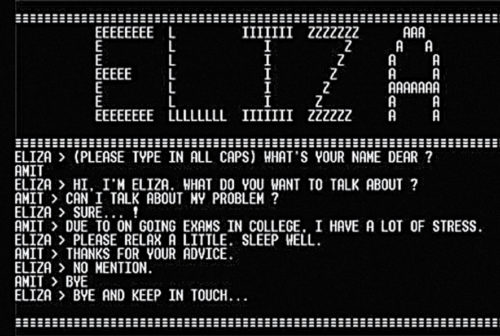
1997 saw The Deep Blue—an IBM supercomputer that beat the world chess champion Garry Kasparov. By the late 1990s, web crawlers and other AI-based information extraction programs became indispensable in widespread use of the worldwide web.
Convergence of AI and fashion
Applying AI in the field of human creativity has been one of the greatest challenges for software engineers. Fashion changes with culture and time. For instance, Asian fashion style is quite different from European. A complete styling task requires a large number of attributes, including event, clothes, shoes, accessories, makeup and hairstyling. A stylist is also very personal.
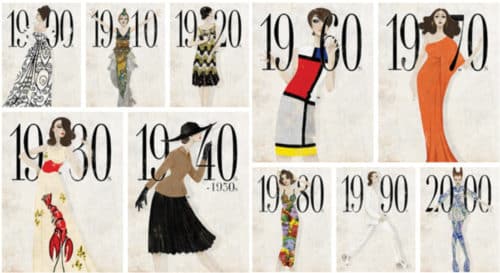
AI stylist programs consider three major components:
1. Visual garment representation—a garment database that stores garment items by categories
2. Computational styling, which processes styling rules and assigns popularity to individual items and completed looks
3. Fashion trend tracking—a learning component that reads users’ feedback and adjusts weight in the style engine based on the popularity rank of a completed look and user opinions on styling looks
Computer vision techniques can extract attribute information from an image and AI techniques such as semantic mapping enable the program to deal with tricky attributes such as fabric. AI programs have the ability to execute a fashion styling task with a simplified model.
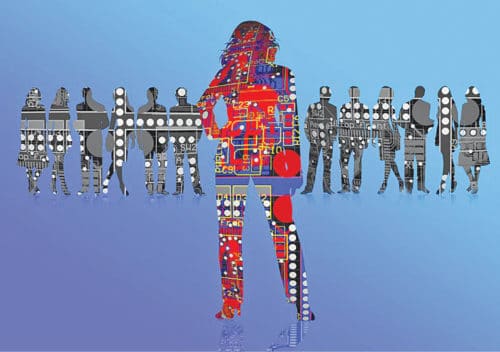
AI-based stylist program
Conceptually, fashion can be defined as a two-dimensional concept, an object and a process. The fashion object can be thought of as a specific product or innovative design. In 2000, fashion design assistant system used genetic algorithms. Later, decision trees with genetic algorithms came into use to model individuals’ clothing. In 2008, stylists started implementing category learning and neural networks in an intelligent clothing shopping assistant system and computer vision techniques with support vector machine classifiers to discover the semantic correlations between attributes.
In the past, studies have been conducted to understand, detect and predict fashion trends and fashion cycles from the perspectives of both the theory and the application. These studies generally focused on predicting trends in colour fashion of clothing. Later, an expert system was developed to assist stylists with information on new colour trends. AI models were also used to predict fashion colour trends with the help of an expert system.
AI programs are becoming an efficient assistant for human stylists. Earlier, stylists used colour harmony evaluation between garment pieces to consider the four basic attributes—colour, outline, print and fabric. An AI-based program is capable of handling more attributes such as event, clothes, shoes, accessories, makeup and hairstyling. Complete fashion design usually includes details such as a top with a bottom or dress, shoes, accessories, bags, hairstyles and makeup.
There are four popular applications of an AI-based stylist program:
1. Internet-based human stylist consultant services for putting communication between clients and stylists on the Internet. It helps to improve the flexibility and accessibility of styling work.
2. Virtual fitting systems to fill one of the major gaps between e-commerce and retail stores. It enables customers to go through the product line, watch over product reviews and gain more confidence about the item being purchased.
3. Recommender system implementations in e-commerce to recommend new items based on users’ browsing histories.
4. Online fashion communities to provide a platform for people to share, gain and communicate fashion inspiration and shopping information online.
How AI helps in fashion design
Garment representation
As mentioned earlier, a set of basic features such as colour, shape, print and fabric is used to describe garments. Computer vision techniques automatically recognise the first three features. Colour is represented in RGB (red, green and blue) format, which is later converted into HSI (hue, saturation and intense) model.
Shape is easily extracted using computer vision techniques and print of a garment is considered in its loudness. Loudness is defined by the frequency of colour changes in the garment and also by changes in placement on the garment.
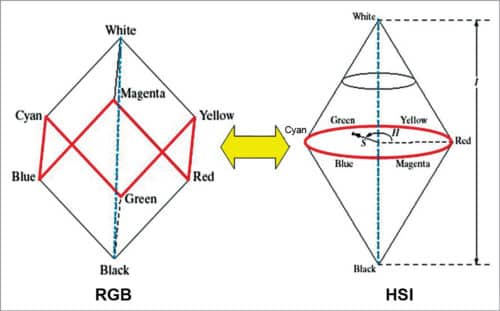
Fabric is the most complex aspect as even humans have trouble in recognising a fabric just by looking at it. One possible solution for tricky attributes like fabric is stylistic semantic correlations between clothing attributes. Systems learn correlations between attributes and then intelligently fill in missing values. For example, for a formal dress there is a high possibility of it being made of silk, whereas casual wear such as t-shirts are more likely to be made of cotton.
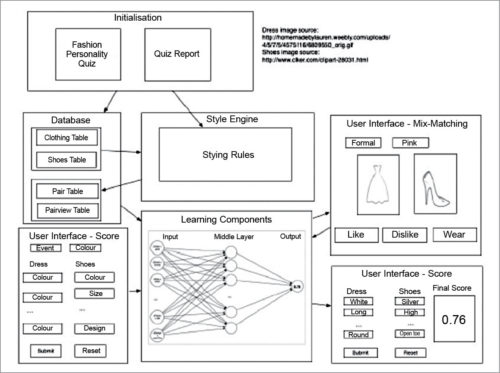
Support vector machine classifiers are applied on all attributes to determine how useful these attributes would be in prediction. Then, the system makes predictions based on the inference of different attributes and mutual dependency relations.
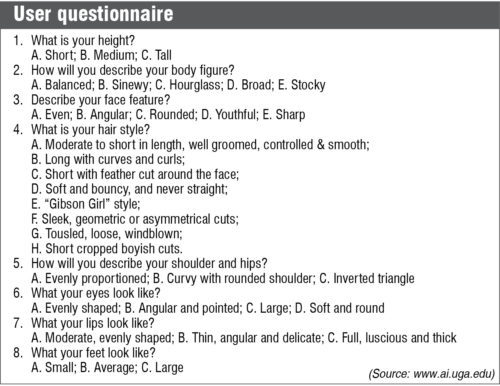
Colour harmony evaluation
Matsuda Colour Coordination (MCC) developed by Yutaka Matsuda is used to evaluate the harmony rate between colours. A total of 80 colour schemes (8 hue types and 10 tone types) are used. A colour scheme is considered harmonious if there are many samples in the system.
Each individual has a unique style preference. An intelligent style system can instantaneously adapt from a standard colour scheme to suit a user’s personal preference. Linguistic labels (neutral, a little, slightly, fairly, very and extremely) are added on the colour scheme and presented as fuzzy sets, respectively. The system adapts to a user’s preference during its interaction with the user.
Shape, prints and fabric styling
The next requirement in fashion styling is to identify attributes like shape, print and fabric. Style principles of these attributes change with time and heavily depend on individual preferences. For example, for wearing prints, the style trend used to be only one pattern piece at a time. Later, wearing two patterns with similar shades became trendy. Other features which affect the styling are occasion and cultural background. The stylist needs to look at a number of features from different categories and classify items based on his experience and fashion sense. Updated style rules are a great data source to keep track of changes in fashion trends.
Fashion trend tracking
The stylist program needs to be highly sensitive to fashion trends. Fashion trend forecasting is vital for success in the fashion industry and always poses a bigger challenge than prediction of other fields. The highest variable is the human value.
In the fashion process, new trends start becoming popular slowly before trendsetter adoption and then reach a peak of fast social majority acceptance. These decline dramatically thereafter owing to reasons such as newer trends arrival and boredom setting in the trend after peak.
There are two types of fashion forecasting. One concentrates on current fashion objects and makes predictions on fashion colour trends. The other is based on a longer vision, for example, black and white are never out of date regardless of season or occasion.
Attempts to predict fashion colour trends with AI techniques have seen great success. AI is capable of modelling individual boredom as memory factor of an object and memory parameter as the number of times it is used. Greater frequency of usage means more memories, and thus higher boredom and less utility.
AI methods include:
1. Fuzzy logic. It utilises uncertainty and approximate reasoning and works closer to human brain, providing outputs as straightforward like or dislike.
2. Artificial neural networks (ANNs). This is a learning method, resembling animal nervous systems, mapping input to a target output by adjusting weights. It is suitable for modelling complex styling tasks with multiple features.
3. Decision trees. This method is used in human decision-making models and includes tree-structured graphs that represent attributes as internal nodes and outcomes as branches.
4. Knowledge-based systems. These are programs that represent knowledge and solve complex problems by reasoning out how knowledge artefacts are related or not related. These are used to show relationships between features in fashion styling.
5. Genetic algorithms. These are search techniques that look for approximate or exact solutions to optimisation problems. They are guided by a fitness function.
Smart Fashion: A simple AI fashion styling system
Generally, fashion styling involves the following seven steps: Choosing a theme, selecting a primary colour, mixing and matching clothing pieces, selecting accessories, model or client fitting, hair styling and makeup. AI computer modelling program usually includes the following functions: Representation of the garments computationally (focuses on fashion object), detection, tracking and forecasting fashion trends (about fashion process) and modelling human stylist behaviour (a mixture of both).
Smart Fashion is a machine learning application that recommends fashion looks by learning user preferences through Multilayer Perceptron model. The system scores users’ customised style looks based on fashion trends and users’ personal style history.
Smart Fashion system comprises five major components for fashion styling task:
Initialisation program, database, smart engine, learning components and user interface. It uses artificial neural networks to learn user preferences. It creates a database containing, say, 32 dresses and 20 shoes for four different events, encodes a standard style rules engine, generates more than 500 looks and ranks them by a final score in descending order. The score indicates how fashionable each look is based on users’ feedback. The learning component trains artificial neural network to learn users’ personal preferences and adjusts the final score. The system allows users to customise a fashion look and then evaluate it. This feature provides a shopping guide to inform users’ purchase plans.
Smart Fashion provides a numeric evaluation for user preferences. The system is initialised by the user taking a fashion personality questionnaire. The output of the questionnaire is stored in the system. So users can restart the program by clicking Reset button, avoiding the need to retake the quiz. The questionnaire is described in the box below.
For each style, the system has a set of default database and styling rules. Using style rules, the Smart Engine pairs up dress and shoes, assigns initial scores to each pair and creates a ‘pairs’ table in the database. Two main outputs of the system are: A recommender system to recommend users’ fashion looks based on user interactions and an evaluation system to evaluate users’ customised looks with a score that assists users’ shopping plans.
System learning predicts a pair’s score based on correlations between scores and item attributes. The dataset is prepared and pre-processed. For example, all the dresses and shoes are collected in typical standard style from various sources such as websites and designers’ collections. All clothing items and shoe items are assigned a number of attributes, which are compiled in tables. Standard rules are created for the database. Every rule interprets a binary (positive or negative) relationship between pairs of attributes. Boredom, one of the major factors in fashion model, is created in fashion styling for wearing the same looks several times. So, a count of ‘wear’ is added in the program as a parameter of boredom.
The output of the Smart Engine is a pair table for each event, which stores the pair data and score, and pair’s views, which stores ‘like’ and ‘dislike’ data. The data for ‘like’ and ‘dislike’ is created based on the learning components and evaluation based on the selected attributes. The learning task is completed using a number of Machine Learning algorithms and data preprocessing to predict the final score based on correlation with item attributes. Learning rate, a mathematical measure, is a decreasing function of time as the process is very inefficient in the beginning when we are learning to do something new. The efficiency gets better with more practice.
How AI is helping to increase the business
AI has two main applications in fashion: One is styling and creating clothes and the other is helping fashion business houses predict current and future trends to create clothes that are in high demand and enable a highly personalised shopping experience for customers.
AI can help retailers to leverage massive amounts of unstructured data to improve and personalise the online shopping experience. At present, fashion brands and retailers are dependent on a limited amount of data to forecast the products to order and then the products to discount or replenish towards the end of the season. A wrong prediction results in revenue loss due to mark-downs, wastage and discounted selling of items. AI can help a retailer to align product stocks with demand, and also display products for maximum sales generation by analysing large amounts of data—for example, browsing and shopping history of customers.
Stylumia is an AI-powered tool that can interpret a huge amount of data collected from videos, e-commerce sites, social media, etc. Its users have reported 200-400 per cent jump in revenue growth and about 25 per cent reduction in inventory. Fashion leaders such as Vero Moda, W, Jack & Jones and Pepe Jeans regularly use Stylumia to predict consumers’ likes and dislikes.
IBM’s Watson is partnering with The North Face to offer guided shopping online. The AI system asks shoppers questions on factors such as gender, time of year and product details to deliver customised recommendations.
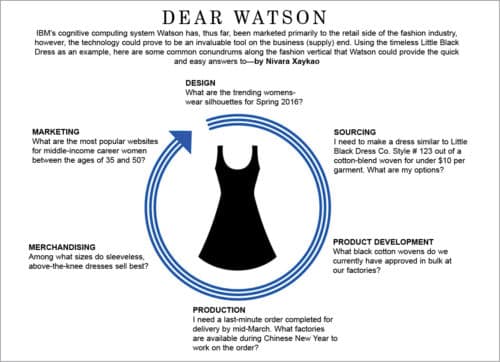
Marchesa, a high-end French label, has created a cognitive dress using AI tools. The dress changes colour according to the live comments made by clients on their social media accounts.
The fashion industry is increasingly embracing the latest developments in AI to increase e-commerce productivity, improve retail experience, and provide promotional campaigns and clothes themselves. India is also waking up to AI-enabled fashion. Designers Falguni and Shane Peacock have unveiled a collection in collaboration with IBM-Watson. Myntra has launched a popular line of machine-designed t-shirts, called Moda Rapido, which have been developed using in-house AI platform RAPID. Vue.ai by Mad Street Den, an AI company in Bengaluru, provides personalised style recommendation to shoppers.
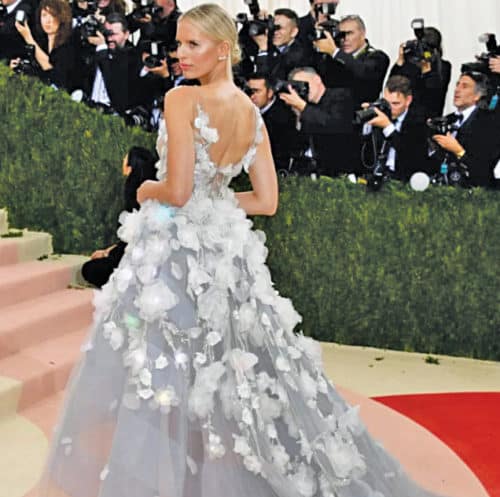

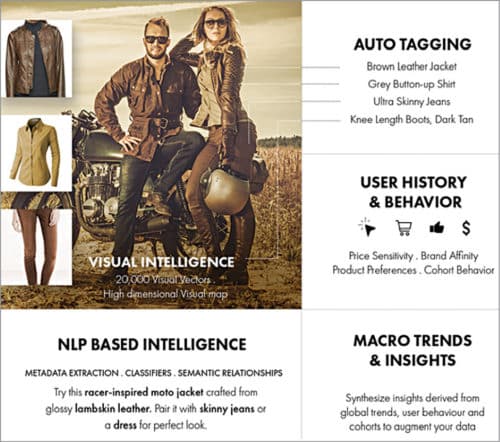
Looking ahead
Image recognition apps such as Snap Fashion and ASAP54 are available to build search engines. Imagine a user taking a picture of someone wearing a dress that he has liked, or something as abstract as a painting, and the image-recognition search engine searching the huge database of products that can be bought to make available the desired or similar items. This online shopping experience could be overwhelming for customers.
As online shopping continues to grow, it is imperative for companies to utilise tools that can help them attract and retain customers. AI can serve as a communication platform to update customers on collection releases and product availability. It can provide interactive storytelling and unique digital experiences with the help of creative algorithms. Also, it can strengthen e-commerce by tracking users’ preferences and giving them a customised shopping experience.
An AI machine will crunch fashion data related to millennial, current colour and silhouette trends, trend forecasts for the next season, what movie stars are wearing and such similar information, and suggest in a matter of seconds several options to choose from. In comparison, a fashion designing team working manually will take many days to come up with such suggestions. In fact, some experts feel that artificial intelligence systems have now reached a stage where they could well replace the human fashion stylists!













